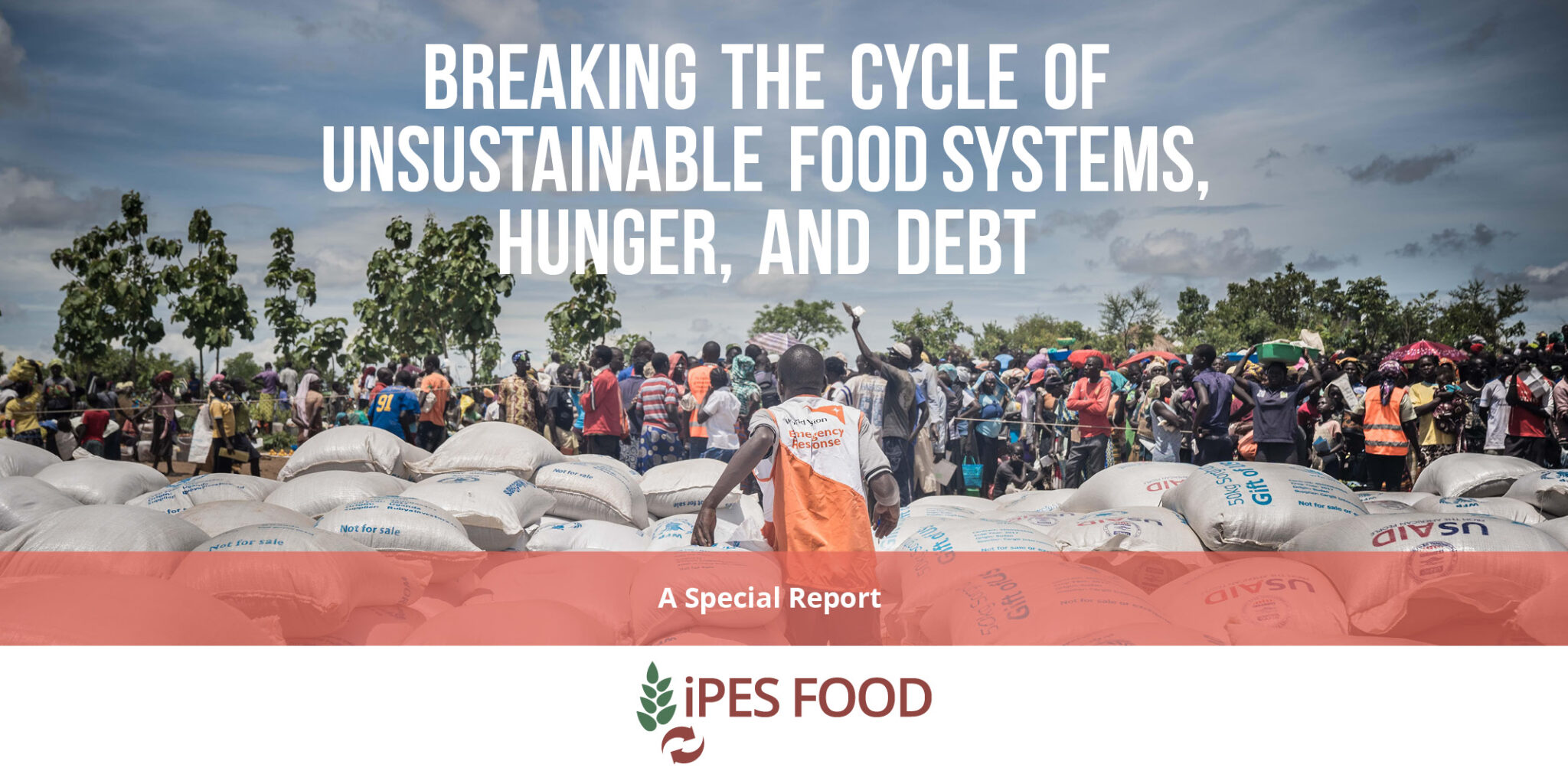The food price crisis is entering a dangerous new phase – a debt crisis that is plunging millions more into hunger. Although food prices have receded from 2022’s record highs, public finances in low-income countries are being buffeted by sky-high import costs for food, fertilizers, and energy, and rapidly-rising interest rates. 60% of low-income countries and 30% of middle-income countries are now considered at high risk of, or already in, debt distress; while some 21 countries are nearing catastrophic levels of both debt distress and food insecurity.
A Special Report by IPES-Food, released today as global leaders meet to address challenges faced by the world’s Least Developed Countries (‘LDC5’, 5-9 March), warns that our unsustainable and inequitable global food systems are a major driver of the debt crisis. Import dependencies, extractive financial flows, boom-bust commodity cycles, and climate-vulnerable food systems are combining to destabilize the finances of the world’s poorest countries. In turn, unsustainable debt leaves countries critically exposed to shocks and undermines their ability to invest in climate-resilient food production and food security.
Breaking the cycle of unsustainable food systems, hunger, and debt is vital to avert catastrophic impacts for the world’s poorest countries. The expert panel calls for urgent action to:
- Provide debt relief and development finance on a scale for COVID-19 recovery, climate action, resilient food systems, and the Sustainable Development Goals.
- Repair historical food system injustices and return resources to the Global South.
- Democratize financial and food systems governance to put the interests of the world’s poorest countries and marginalized populations first.
Read the full report http://www.ipes-food.org/pages/debtfoodcrisis



